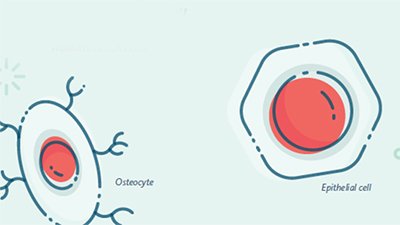Shame on Time!
Time magazine’s most recent cover story—‘Inside the Womb’—offers ‘an amazing look at how we all begin.’
Time magazine’s most recent cover story-“Inside the Womb”-offers “an amazing look at how we all begin.” The most amazing thing about this report, however, is how much evolution has blinded the eyes of some researchers to the real message that they should be learning from these breathtaking discoveries about a baby’s first nine months.
“We are fearfully and wonderfully made!” shouts off every page in the Time article (11 November 2002). But the writer never mentions the Maker’s name, and she scoffs at “antiabortion activists” who might interpret the latest scientific discoveries as evidence for their cause.1 Instead, she tries to impose another message.
In a series of breathtaking images of embryos, from conception through birth, there are some strange captions that carry a subliminal message. 32 days: “No bigger than a ladybug, the embryo forms a primitive heart, eyes and blood vessels … , while the emerging arms and legs still resemble flipper-like paddles.” 40 days: “At this point, a human embryo looks no different from that of a pig, chick or elephant. All have a tail, a yolk sac and rudimentary gills.”
Did you catch the message? Most readers probably did, because everyone likes to look at pictures (and few stop to read the text). The hidden message is the same one that millions of students hear all the time in their science classes-embryonic recapitulation, the myth that human embryos go through various evolutionary stages (e.g. gill slits like a fish, a tail like a monkey) until they reach a human-like stage. The scientific community rejected this fraudulent theory long ago, but it keeps cropping up in popular literature all the time. (See Q&A: Embryonic recapitulation and similarities.)
AiG’s newest book. Refuting Evolution 2, exposes this fraud and then explains,
“A human embryo never looks reptilian or pig-like. A human embryo is always a human embryo, from the moment of conception; it is never anything else. It does not become human sometime after eight weeks. This is just what the Bible says-the unborn baby is a tiny human child (Genesis 25:21-22; Psalm 139:13-16; Jeremiah 1:5; Luke 1:41-44).”
But Time magazine is too bent on pushing its bias to see the obvious implications of its story.
How blind can they be?
The captions that appear in Time“s photo spread imply that man is just an evolved animal, but the article itself implies just the opposite. There you read words like “amazing,” “extraordinary” and “marvelous.” A Bible-believing creationist couldn’t have been clearer about the marvels of the human embryo:
“The marvel of an embryo transcends the collection of genes and cells that compose it. For unlike strands of DNA floating in a test tube or stem cells dividing in a Petri dish, an embryo is capable of building not just a protein or a patch of tissue but a living entity in which every cell functions as an integrated part of the whole. … Given the number of steps in the process, it will perhaps forever seem miraculous that life ever comes into being without a major hitch [emphasis added].”
Ah, the “miracle” word. Evolutionists can’t bring themselves to say it outright, but sometimes they’re simply left with no alternative. The wonders of embryonic development shout from the housetops, “There is a wise, awe-inspiring Creator who made us!” And yet so many keep missing the message that they see and hear all around them.
Instead, they’re left with inanities about seeing “a tail … and rudimentary gills.” There aren’t any tails or gills in the images (see Does the human fetus temporarily develop gills, a tail, and a yolk sac?), but there certainly is a Creator God who made man uniquely in His image! Anyone who believes that scientists follow the evidence wherever it leads aren’t being honest with themselves. It’s impossible to avoid letting our worldview color our interpretation of the facts. Creationists base their interpretation on a Biblical worldview that focuses on God, whereas evolutionists build theirs on a naturalistic worldview that rejects God. Both types of scientists begin their research with a worldview-their worldview isn’t something they discover lying around on the ground to be studied under a microscope. (See Creation: “Where’s the Proof?”) The late atheist/evolutionist Stephen Jay Gould was candid about this prevalent bias:
“Our ways of learning about the world are strongly influenced by the social preconceptions and biased modes of thinking that each scientist must apply to any problem. The stereotype of a fully rational and objective ‘scientific method,’ with individual scientists as logical (and interchangeable) robots is self-serving mythology.”2
Time magazine’s article “Inside the Womb” is filled with thrilling examples of ongoing “operational” science’-the type of science that leads to discoveries about fighting disease, healing cancer and overcoming birth defects. But when it comes to understanding the meaning of science or the origins of the human embryo, then the article loses all objectivity.
And shame on Time for including the outdated and proven fraudulent idea of embryonic recapitulation (that has been discarded by scientists) to reinforce evolutionary ideas in the public eye.
Footnotes
- Nash, J.M., Inside the Womb, Time, 11 November 2002, p. 70.
- Gould, S.J., Natural History 103(2):14, 1994.
Recommended Resources

Answers in Genesis is an apologetics ministry, dedicated to helping Christians defend their faith and proclaim the good news of Jesus Christ.
- Customer Service 800.778.3390
- Available Monday–Friday | 9 AM–5 PM ET
- © 2025 Answers in Genesis







